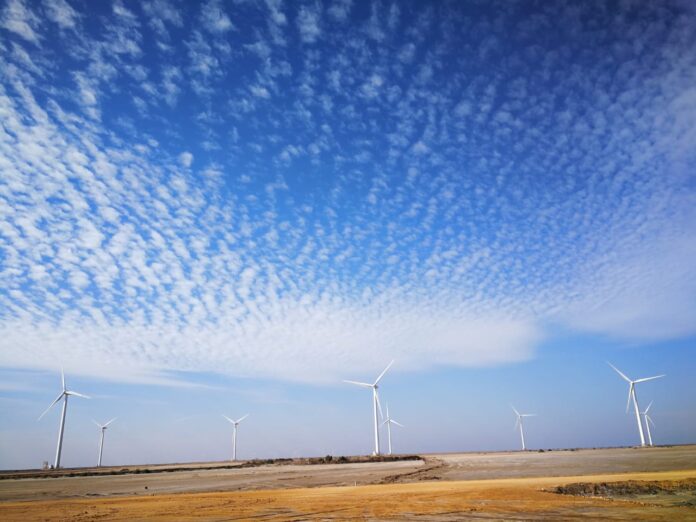Last week, POWERCHINA and the Pakistan-China Institute (PCI), in collaboration with All Pakistan Chinese Enterprises Association (APCEA) and China Society for Hydropower Engineering (CSHE), launched a groundbreaking report titled “Development Prospects of Chinese Enterprises in Green Energy Industry in Pakistan”.
Guided by President Xi Jinping’s vision of “lucid waters and lush mountains are invaluable assets,” the latest government work report issued during the Two Sessions showed in the past five years, China’s energy consumption per unit of GDP has dropped by 8.1%, and carbon dioxide emissions have dropped by 14.1%, which means a solid step forward to a “beautiful China”. Meanwhile, the proportion of clean energy consumption rose from 20.8% to over 25%. Achieving these goals are inseparable from the efforts of China’s new energy enterprises, which not only contribute to China’s long-term goal of carbon neutrality, but also contribute to green development worldwide, in which cooperation between China and Pakistan in this regard as a good example.
“Since we cooperated with local investors to build the Dawood 50MW Wind Power Project under the framework of the CPEC in 2015, as our first new energy project in Pakistan, including the Sachal 50MW Wind Power Project built in cooperation with Arif Habib, and the Tricon Boston 150MW Wind Power Project built in cooperation with Sapphire, the total power generation of our wind power projects in Pakistan has reached 1140MW. In addition, we have also cooperated with Atlas to build a 100MW solar energy project,” Mr. Yang, Chief Representative of POWERCHINA in Pakistan and Chairman APCEA, noted. He emphasized that all of these efforts are not just business opportunities but a kind of responsibility that they must take on.
“We recognize that our actions have a far-reaching impact.” Yang indicated that the development of green energy is a systematic long-term project. “Considering the status quo of Pakistan’s energy structure, the public and factories need to be encouraged to install household solar energy systems in order to reduce electricity costs without increasing the government’s burden. At the same time, corresponding pumped storage power stations and energy storage facilities should be planned and developed gradually to deal with the power instability that occurs with the large-scale development of green energy.”
“Regarding other types of green energy, including bioenergy, geothermal energy, tidal energy, green hydrogen energy, taking biogas as an example, there are 13 million biogas facilities in the vast rural areas of China, and the fertilizers brought by agricultural production is undoubtedly an excellent source of biogas. Pakistan and China, both being big agricultural countries, if China’s experience in this regard can play a role, the development of bioenergy in Pakistan will have bright prospects.”
Mustafa Hyder Sayed, Executive Director of PCI noted in his welcome remarks that the launch of the report signifies a major step towards sustainable development and resource efficiency in the bilateral economic cooperation between China and Pakistan. And the launch of the report was praised by Dr. Hasan Sher, the Vice Chancellor of the University of Swat, as a significant step towards promoting sustainable development in Pakistan. Dr. Sher appreciated the report’s insights into the policy and regulatory framework, market demand, and financing options available for Chinese investors in Pakistan’s green energy industry.
All guests agreed that the report is a beacon of hope for the future of sustainable energy in Pakistan. More and more Chinese enterprises are devoting themselves to Pakistan’s new energy field. “The largest hydropower project we are constructing, the Diamer Basha Dam, will become the tallest and largest roller compacted concrete dam (RCCD) in the world, which is expected to provide Pakistan with 18.1 billion kilowatt-hours of clean electricity every year,” Yang told the reporter, bluntly.


